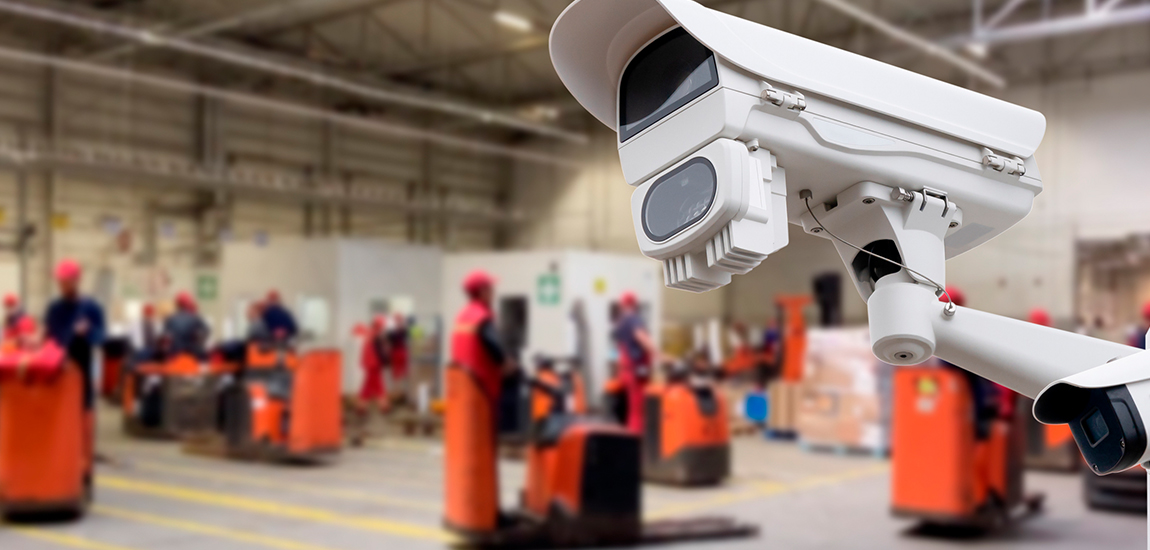Article 20.3 of the Workers’ Statute allows the employer to adopt the measures it deems most appropriate to verify compliance with the employees’ labor obligations and duties. One such measure can be video surveillance. In this post we provide a practical guide on its use.
Article 89 of Organic Law 3/2018, of 5 December, on the Protection of Personal Data and Guarantee of Digital Rights (OLDPGDR) regulates the right to privacy regarding the use of video surveillance devices in the workplace, on the basis that companies may process images obtained through camera or video camera systems for the exercise of the functions of control of employees provided for in article 20.3 of the Workers’ Statute.
Over the last few years, numerous court decisions have been specifying the requirements, conditions and limitations that must be respected when installing any video surveillance system in the workplace. For its part, the Spanish Data Protection Agency addressed the issue in section 5.3 of the document published in May 2021 on data protection in labor relations.
We offer below a guide in which we deal in a systematic and practical way with the most important aspects to consider about the installation of a video surveillance system in a company:
- Justification
The installation of cameras in workplaces must be justified for legitimate reasons, understood as the protection of property, the prevention of crime, the safety of employees and the control of compliance with their work obligations.
- Proportionality
The installation must be justified for one of the legitimate reasons listed above and must be proportionate. That is, it must be appropriate and not excessive or unnecessary to achieve the objective pursued: there must be no other less invasive measure that can be equally effective for the same purpose.
This implies that it will be necessary to determine whether the installation of cameras is proportional or not, and if so, the number of them and their technical characteristics.
- Information
In addition to placing visible signage indicating the presence of video surveillance cameras in compliance with the provisions of article 22.4 of the OLDPGDR, companies must inform, in advance, employees and their representatives, expressly, clearly and concisely, about the installation of the cameras, their location, the purpose of the surveillance, the identity of the data controller and the contact details for the exercise of rights. Likewise, companies must have a privacy policy that complies with the requirements of the General Data Protection Regulation (EU) 2016/679.
When there are well-founded suspicions about the possible commission of a criminal, labor or administrative offence, the evidence obtained may become valid without full compliance with the obligation to provide information (in very specific cases, which must be analyzed). And if the flagrant commission of an illegal act by the employees has been caught, the duty to inform is understood to have been fulfilled when at least the aforementioned signage exists (second paragraph of article 89.1 OLDPGDR).
- Limitations on where cameras can be installed
Article 89.2 of the LOPDGDD prohibits the installation of video surveillance systems in places intended for employees’ rest, such as changing rooms, toilets, dining rooms and the like.
- Sound recording
The recording of sounds is generally prohibited unless the risks to the safety of the facilities, goods and people derived from the activity carried out in the workplace are relevant and always respecting the principles of proportionality and of minimum intervention, and the guarantees summarized in this post (article 89.3 OLDPGDR).
- Use and retention of images
The images captured must be used exclusively for the purpose for which they were collected and not for other purposes.
They may be kept for a maximum period of one month from their capture, unless they are necessary to prove the commission of acts that threaten the integrity of persons, goods or facilities. In this case, the images must be made available to the competent authority within a maximum period of seventy-two hours from the time the existence of the recording was known (article 22.3 OLDPGDR).
This is a summary of the most relevant issues to review before installing traditional surveillance cameras in the workplace. If the cameras have an artificial intelligence system, other specific analyses on the matter will be essential (for example, to assess whether any prohibition established in Regulation 2024/1689 on Artificial Intelligence may be applicable or any additional specific obligation must be complied with).
In conclusion, the installation of cameras requires careful planning to ensure compliance with the regulations on the subject.






